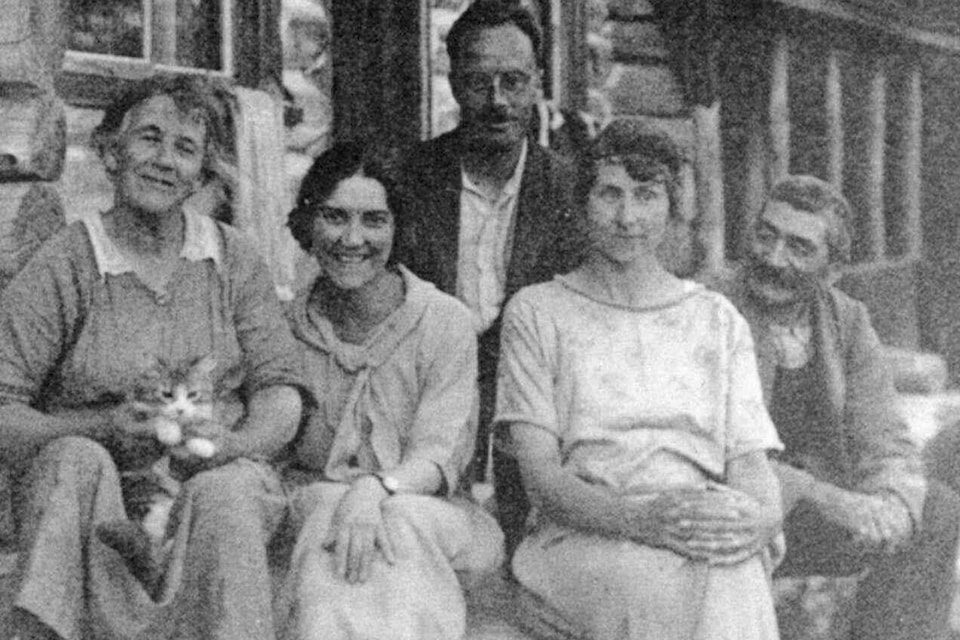Two early residents of Red Deer who gave up a great deal to be with each other and who started a new life together on the prairie frontier were Elsie and William Cassels.
William Alexander Cassels was born in Yorkshire England, the son of wealthy Scottish parents. He was educated at the Edinburgh Academy. He had as one of his classmates and close friends, Francis Wilkins, son of the British vice-consul to Chicago and grandson of the first president of the Chicago Board of Trade.
In 1882, William Cassels came out to the United States with the Wilkins family. He tried ranching in Wyoming and homesteading in Iowa. In 1889, he returned to Scotland where he met and married Elsie McAlister.
Elsie McAlister had much more humble roots than William. She was born on a small croft or farm at St. Mary’s Loch, Scotland. The Cassels family did not approve of the marriage. Consequently, the couple was married not with a church wedding, but by a lodger at the McAlister household using a county warrant. They then departed for Canada to join up with Francis and George Wilkins, who had started a ranch on what is now the Red Deer Golf and Country Club.
The Cassels decided to start their own homestead in the Wavy Lake district near Penhold. They built a green poplar log shack. When they built an adjoining stable, it was Elsie who lifted the heavy sods up off the wagon to Bill, who then placed them to make a roof. Also, when they constructed the willow post fence, Elsie did much of the pounding, while Bill made the holes.
Conditions were very tough in those early years. The farm was very susceptible to frost and it was hard to grow even a garden. The couple lived on a lot of wild game, which as often as not, Elsie shot. Elsie once stated that the cabin was so cold in the wintertime that one end of the dish towel would freeze while the other end was being used to dry the dishes by the stove.
The Cassels decided to move to a new farm, located in what is now the Inglewood subdivision. When that did not work out very well either, they moved into Red Deer in 1899 and built a small, but comfortable brick house that still stands on the corner of 57 Street and 47A Avenue. Because of their great love of birds, the Cassels called their new home Robinwold.
The Cassels were very artistic and musical. They were active members of the St. Luke’s Anglican Church choir. They loved the stage. They were instrumental in creating three theatrical groups in Red Deer in the 1890’s, at a time when the community was less than 300 residents in size.
Elsie’s performance in the play “Jane”, which was staged by the Red Deer Dramatic Society, was so outstanding that many local people referred to her as “Lady Jane” for the rest of her life.
Not all of her public experiences went as well. Elsie liked to tell the story about a time when, in going to a dance, she decided to wear an old hat, brightened with black shoe polish and trimmed with wild grasses. Unfortunately, it rained and she commented that she then had a “poor cosmetic” for her face.
Elsie and Bill became active in the Alberta Natural History Society. Elsie in particular, soon developed a national reputation as an ornithologist. She kept careful diaries on bird migration patterns as well as feeding and nesting habits.
When the Cassels decided to acquire a summer place at Sylvan Lake, they chose a heavily wooded area that would be a sanctuary for birds and other wildlife. They decided to name this property “The Ark”.
Elsie’s health deteriorated in the late 1930’s. She passed away in November 1938 following a severe stroke. Bill passed away a little over two years later in March 1941. They are buried together in the Red Deer Cemetery.
The Cassels had always lived an exceptionally frugal life. It therefore came as a great shock to the community when it was learned that they left an estate of several tens of thousands of dollars after they died. As they had no children, the money went back to relatives in Scotland.
Michael Dawe is a Red Deer Historian and his column appears on Wednesdays.
